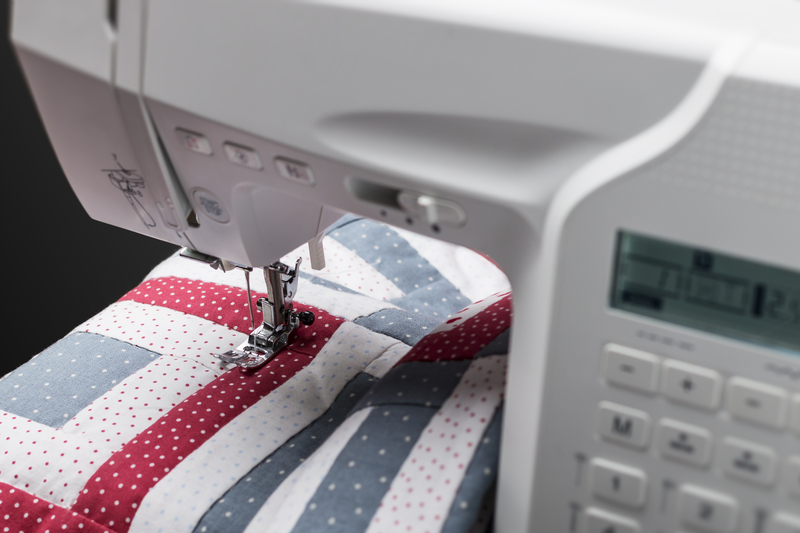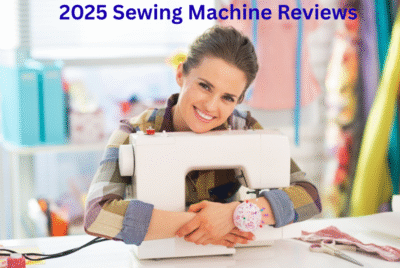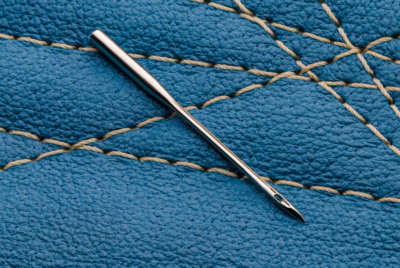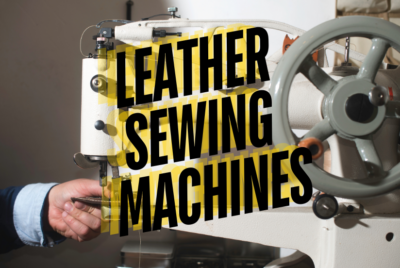Quilting Sewing Machine Buying Guide Tips
Quilting is an art form that combines precision, creativity, and a love for textiles. A beloved craft that allows individuals to create beautiful and intricate designs on fabric. To embark on this quilting journey, you must have a reliable and efficient tool, a quilting sewing machine.
Here is an introduction to the world of quilting sewing machines, highlighting their unique features and important accessories. Start your research with our guide, “Quilting Sewing Machine Reviews.” Learn about the top quilting machine brands and models with this as your starting point.

What is a Quilting Sewing Machine
A quilting sewing machine is a specialized machine that combines regular sewing features with extra options for quilters.
These machines often come with larger workspaces, extended throat space, and advanced stitch control options. They are capable of handling multiple layers of fabric. This makes them ideal for quilting projects of all sizes and complexities. See our article “How Sewing Machines Work” for some basic sewing terminology.
Why Use a Quilting Sewing Machine
These machines offer many benefits that can enhance your quilting project experience. Models are available for all skill levels. Selecting a quilting sewing machine that adapts and helps complete your projects is important.
With precise stitching capabilities and specialized features, these machines enable you to create intricate designs and professional-quality quilts.
Multiple sewing operations completed simultaneously save your time. If you will spend time quilting, you need a machine to improve your skills, whether you are a beginner or experienced.
What Characteristics to Consider for a Quilting Sewing Machine
Selecting the perfect quilting sewing machine depends on the projects you want to work on. Four different areas that can affect your outcomes are efficiency, adaptability, stitching capabilities, and quilting-specific features.
Efficiency
Equipment engineered to expedite the quilting process will make your experience much more enjoyable. If you have tried quilting with your sewing machine and have had difficulties, then consider investing in a quilting sewing machine.
Their speed and precision allow for faster stitching. This is a valuable time and effort saver. Anything that saves time and effort, will probably also help reduce frustration and improve your project.
Adaptability
These machines offer a wide range of stitch options. This adaptability and versatility allows you to explore various quilting techniques and experiment with different designs.
As you think of projects, consider the different types of stitching you might need. This could include decorative or appliqué stitches. For unique designs, the machine should be able to produce quilting-specific stitches.
Stitching Capabilities
Quilting sewing machines provide advanced stitch control mechanisms, such as adjustable stitch length and width, needle positioning, and even stitch regulators.
These features ensure consistent and precise stitching, resulting in professional-looking quilted projects. If your stitching changes in any way over time, your piece will obviously be impacted.
Quilting-Specific Features
Unlike traditional sewing machines, quilting sewing machines often come with features tailored to quilters’ needs. Some that are helpful are:
- extended work surface
- wide variety of presser feet available
- ability to handle thicker fabrics
- capable of sewing multiple layers with ease.
Review what characteristics are important for you in your decision making process.
Guide to Buying a Quilting Sewing Machine
Regardless of your skill level, finding the perfect quilting sewing machine requires some thought. Here are 5 areas to consider when selecting your quilting sewing machine.
This step-by-step process will help ensure that you find a machine that meets your specific needs and requirements. Let’s delve into each stage to guide you towards the ideal machine for your quilting projects.
1) Assess Your Quilting Sewing Machine Needs
Determine the types of projects that you want to do. This is an essential first step.
First, assess your sewing level of experience.
- Beginners should look for a machine with user-friendly features and automated functions.
- Experienced quilters may prefer machines that offer extensive stitch options and customization.
Then, consider the size and complexity of your quilting projects.
- Working on large quilts requires a spacious work area.
- Intricate design with embroidery work will require a machine with advanced features.
Lastly, think about the types of fabrics and how many layers you typically work with.
- Thicker or heavier fabrics require a robust, more powerful machine.
- Sewing multiple layers of fabric require a more powerful machine.
Assessing these factors will help you identify the quilting sewing machine with the features and capabilities you need. Hopefully this will ensure a satisfying and tailored quilting experience.
2) Research Quilting Sewing Machine Brands
Use the information you gathered from the assessment of your needs to guide your search for quilting sewing machine models that meet your requirements.
Research requires gathering information from multiple sources. These include manufacturer websites, customer reviews, and online forums. Your research should obviously relate to your assessment needs.
Start your search with our article “Quilting Sewing Machine Reviews” which provides 8 quilting machine brands and reviews of 2 of their popular models. The pros and cons for each model are given, as well as a comparison of the 2 models.
Ensure that your research takes includes any unique capabilities you will need. Specialized design functions, heavier fabrics, or multiple layer capabilities will limit the available model selections.
Read customer reviews not only for the model you are interested in but also of other models the manufacturer makes. This should give you a broad view of this brand’s overall sewing machine quality, performance, and durability.
Locate online user instruction manuals. This will give you insight as to how easy the machine will be to use. Look for the specific model you are interested in buying.
Physical characteristics and functions are important but also look for what customer and technical support is available.
Knowing the company’s warrant policy and procedures if something goes wrong is valuable knowledge.
Although we all hope that replacement parts will never be needed, check how easily and readily available they are.
3) Set Your Budget
As you have done your research you have probably become aware of the wide range of prices related to the capabilities. Now it is time to establish your budget for your quilting sewing machine.
Determine the maximum amount you are willing to spend and seek out machines that offer the best value for your investment.
Remember to consider long-term costs that you can incur, such as maintenance and accessories. These typically are related to how much you will use your machine.
4) Compare Machine Features
Before identifying quilting sewing machine features, consider the specific quilting sewing needs and preferences for your projects.
- Pay attention to the machine’s possible stitch length and width settings.
- Check if the needle positioning is adjustable.
- Review what specialized quilting features like a walking foot or a built-in stitch regulator are available.
- Evaluate the size and stability of the machine’s work surface, especially if you work on larger quilting projects.
- Consider the availability of compatible presser feet.
- Know the machine’s ability to handle different fabric thicknesses.
- Identify ease of use features
- Look into the maintenance requirements and the availability of accessories and attachments for future expansion.
You will enjoy your quilting sewing machine experience much more if you start with a machine that meets your needs.
5) Test Drive the Machine
If possible, go to a local retailer to have a demonstration. This will give you a feel for the machine’s ease of use, noise level, and overall comfort.
Testing the machine firsthand will provide valuable insights into its performance.
Quilting Sewing Machine Accessories
Different projects you pursue might need quilting sewing machine accessories specific to the task. Here are a few you might eventually need.
Quilting Feet
Invest in a selection of quilting feet specifically designed for different quilting techniques.
These may include a walking foot for even fabric feed, a free-motion quilting foot for stippling or intricate designs, and an edge-joining foot for accurate seam allowances.
Extension Table
A large extension table provides additional space to support your fabric during the quilting process.
It ensures smooth and even fabric movement and allows you to work on larger projects comfortably.
Quilting Needles
Quilting needles are specially designed with a sharp point and a tapered shaft to pierce through multiple layers of fabric. Choose needles that are compatible with your machine and suitable for the type of fabric you work with.
Quilting Rulers and Templates
Quilting rulers and templates are invaluable tools for achieving precise shapes and designs on your quilts. They provide the quilter with a guide for tracing or stitching lines onto fabric and assist in creating straight lines, geometric patterns, and intricate motifs.
Quilting Threads
Quilting thread is a specialized type of thread specifically designed for quilting projects.
It is a strong and durable thread that can withstand the rigors of quilting, ensuring that the stitched seams hold up over time.
Thread Stand
A thread stand can be helpful when working on large or complex quilting projects. It accommodates multiple spools of thread, allowing for uninterrupted quilting and reducing the need for frequent thread changes.
Quilting Gloves
Quilting gloves, also known as grip gloves, are specialized gloves designed to provide quilters with enhanced control, grip, and maneuverability while working on their quilting projects.
Accessory Summary
Incorporating these accessories into your quilting setup will enhance the quilting experience and provide you with greater creative possibilities.
Summary
Quilting sewing machines are essential tools for both beginners and experienced quilters. There are a variety of models offering a blend of precision, adaptability, efficiency, and feature selection. These are qualities necessary for creating intricate and high-quality quilts.
These specialized machines come equipped with features such as larger workspaces, extended throat space, and advanced stitch control, designed to accommodate the unique needs of quilting projects.
The guide highlights the importance of assessing your quilting needs and researching reputable brands and models. Follow this with determining your budget and comparing machine features.
Ultimately, finding the right quilting sewing machine involves you deciding on what you need..
FAQs
Are quilting machines suitable for beginners?
Quilting machines can be suitable for beginners, especially those that offer user-friendly features and intuitive controls. Starting with a machine that has basic quilting functions and easy-to-understand settings can help beginners learn and develop their quilting skills.
Can I use a regular sewing machine for quilting?
While you can use a regular sewing machine for basic quilting, dedicated quilting machines offer specialized features and larger throat space, which make quilting larger projects more convenient. Quilting machines also provide additional stitch options specifically designed for quilting.
What is the average price range for quilting machines?
The price range for quilting machines varies depending on the brand, features, and functionalities. Entry-level quilting machines can start from around $300, while high-end professional-grade machines can range from $1,000 to $15,000 or more.
How do I choose the right quilting machine for my needs?
When choosing a quilting machine, consider factors such as your skill level, budget, desired features, and the types of quilting projects you plan to undertake. Research different models, read reviews, and compare specifications to find the machine that best suits your needs.
Do quilting machines require maintenance?
Like any sewing machine, quilting machines require regular maintenance to ensure optimal performance. This includes cleaning lint and dust, oiling the machine according to the manufacturer’s instructions, and periodic servicing by a professional technician. Regular maintenance helps prolong the lifespan of your quilting machine and ensures smooth quilting operations.
What other resources are available for quilting?
Here is a link to the “Top 10 Quilting Forums, Discussions and Message Boards“.
RetroSewMachines.com is a participant in the Amazon Services LLC Associates Program. As an Amazon Associate, we earn from qualifying purchases. We also participates in other affiliate programs and may earn a referral commission if you purchase through links on this website. The information presented here is for general educational purposes only.





Comments are closed.